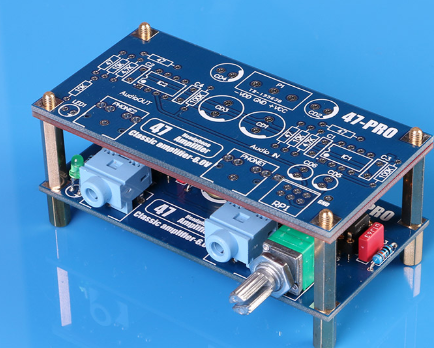Physical damage to printed circuit board components is often caused by improper handling. When we put the circuit board in the circuit board carrier body of the PCB assembly work area, the circuit board may fall,collide,or handle improperly.When the laminated material suffers this kind of damage,can it be repaired? The answer to this question,like most engineering answers, depends on the situation.Tips for electronic circuit board repair:
The industry standard "IPC-A-610: Acceptability of Electronic Components", according to the classification of electronic products, describes in detail what are the acceptable conditions for components and what components are defective components. When the minimum electrical clearance requirements are violated, this inspection specification treats broken corners or laminate damage as defects, and because it is designed as part of the component or it does not meet the requirements of the customer’s printing specifications, the component does not meet the "form, Adaptation or function" requirements.
According to the acceptance criteria,all the conditions mentioned above are defects for all types of products.In addition,for all product categories,if the base metal is exposed due to damage to the corners,it will also be recognized as a defect.

According to section 10.2.5 of the "IPC-A-610" standard,if the "crack" or corner damage exceeds half the distance of 2.5 mm (0.1 inch) or less from the edge of the PCB to the nearest conductor, this will also be considered It is a defect.
Although the customer will ultimately determine what is a defect by selecting the industry standards cited above,once it is determined that the damaged corner represents the defect condition, different types of disposal strategies will be used.The options are:use the circuit board as it is (approved by the customer),repair it (physically damage the PCB), or discard it. When the second option is selected, the corners of the PCB need to be repaired.
When the circuit board is physically damaged due to improper handling or the component is dropped,and the corners of the circuit board are damaged or missing,several other inspections must be performed on the component.In some cases, especially when there are fragile solder alloys,such as various lead free alloys,the solder joints may break due to physical events.In addition,parts near the corners may have pads or traces torn.If the PCB is coated,the coating may have cracked after the component is dropped.Finally,the solder mask and the components themselves must be inspected,as they may also be damaged when impacted.
Many PCB repair methods are outlined in the PCB Repair Guide "IPC-7721: Rework, Modification and Repair of Electronic Components". The first method is to repair the laminate with epoxy resin. Under normal circumstances, this method is used to repair slightly damaged laminates; secondly, you can use regional implants or corner implants. This method is used when the PCB laminate is damaged in a large area, or when the original material is no longer available, such as when the corners are broken. This method has the same meaning as its name. It uses replacement laminates and uses a combination of grooves and tongues for maintenance.
This column focuses on the epoxy method, which has been used to repair broken or damaged corners on assembled rigid PCBs. The first step in this repair method is to identify the extent of damage to the PCB. First, clean the area to be repaired to ensure that the area can be fully inspected. At the same time, use the Gerber file set to evaluate or perform X-ray analysis to determine whether there is damage to the inner circuit wiring. If there is no circuit on the inner layer, or no missing parts due to PCB damage, the described repair method will be the only thing needed.
Use a ball mill to grind off the burrs or fibers of the laminate. If the damaged part is a large corner, it can be cut from the bottom to the edge of the laminate to increase the bonding area. If the internal circuit has been damaged, then you will have to obtain approval or have professional skills to perform these repairs.Then, find a small plastic box for small tools or nuts and bolts you can find. This will be a single-use box, so if you can "borrow" it from somewhere, you can easily get an alternative laminate.
Next, mix the two components of the adhesive resin and hardener according to the PCB manufacturer of instructions.Now,use a small container that has been modified to leave only one corner, and place this small container at the corner to be inserted so that it can be aligned with the damaged corner.Pour the epoxy resin mixture into this small box so that the surface is smooth.The epoxy resin should be cured in accordance with the manufacturer's instructions. Use emery cloth and some water and wet sand to glue the horns.You may have to add some epoxy or colorant to make the shape,fit,and function of the grafted corners the same as the original corners. According to the level of electronic components,the maintenance area shall be cleaned and reinspected in accordance with acceptable standards.
Using this epoxy resin method,you can successfully solve the problem of damaged corners of the circuit board without throwing the damaged circuit board into the scrap pile.